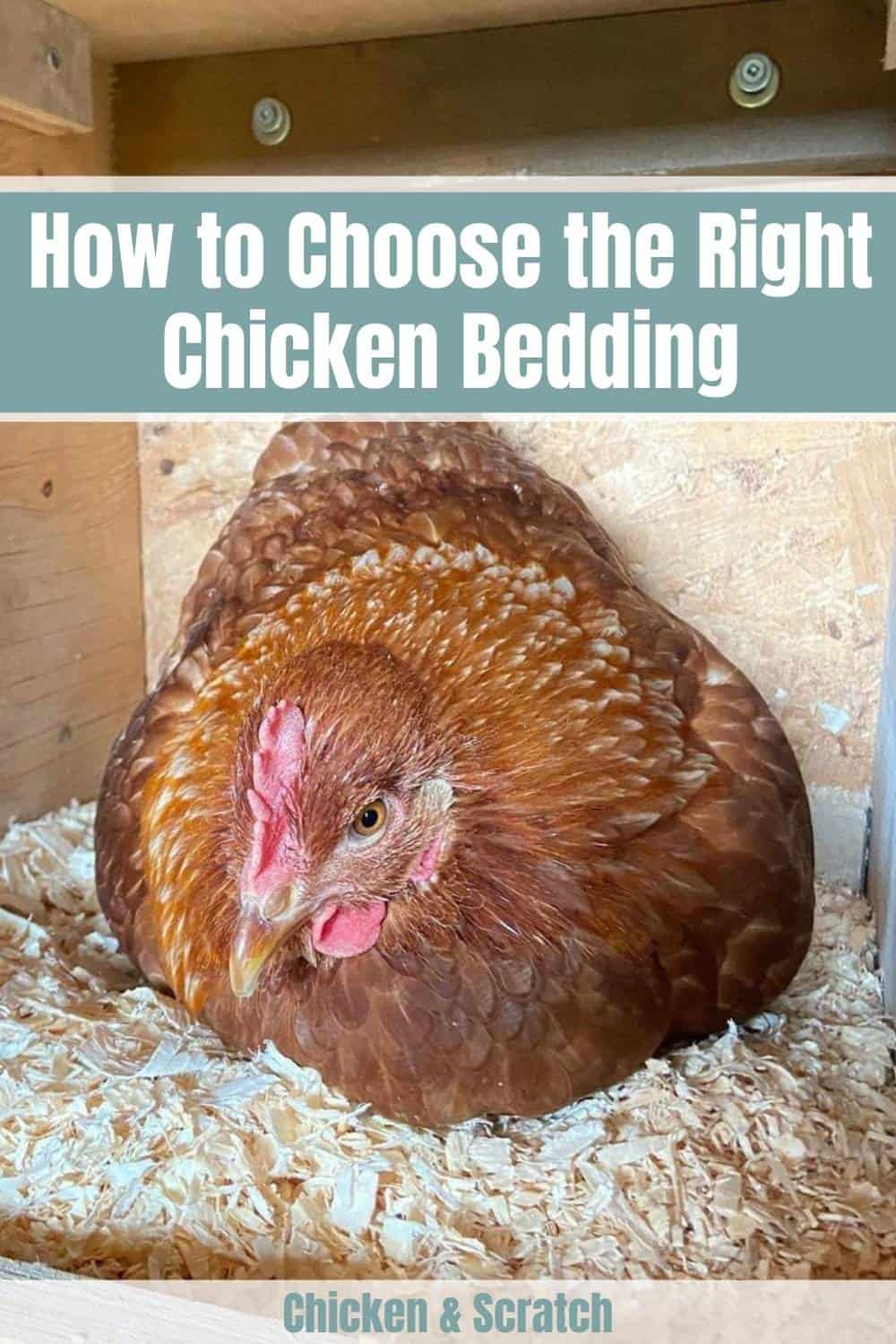Besides comfort, chicken bedding must also offer odor reduction, management, absorption, and a place for hens to lay eggs. A filthy, damp coop is an ideal breeding ground for germs and parasites. So, how do we choose the right chicken bedding?
By choosing the right chicken bedding, you are not only providing comfort but also a great advantage to your flock’s health and wellbeing.
How To Choose The Right Chicken Bedding That Can Manage Coop Litter?
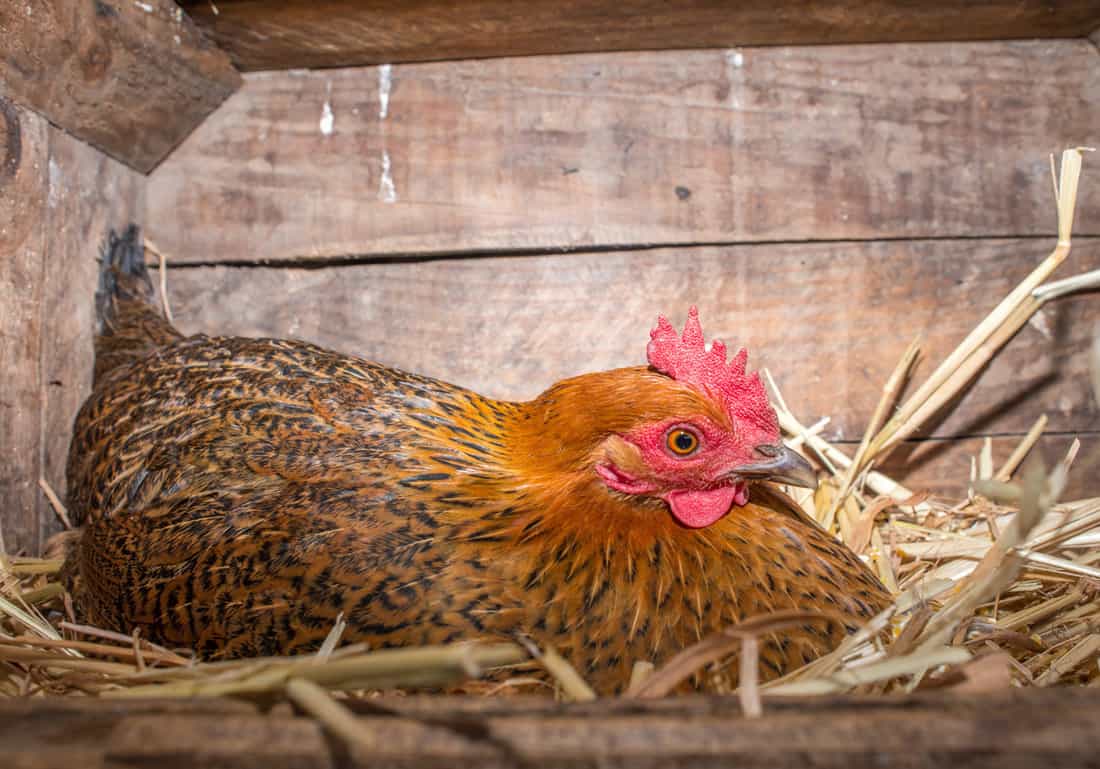
How to choose the right chicken bedding? Make sure there’s soil, wood, or concrete for your chicken coop’s floor. Then there goes the bedding on top.
When choosing the appropriate bedding, it’s necessary to comprehend what bedding is and its purpose. This article will describe its purpose first. Then provide some available options to choose the right chicken bedding for your flock.
Chickens do not urinate; all fall out in a single splat, and over 75 percent of the resulting heap is fluid. As the excrement decomposes, it emits corrosive and odorous ammonia vapors. Most of all, when the decomposed dung exits, moisture condensing from the waste dampens the air.
Normal excrement is more like a solid heap with white streaks. But, once every day, a hen excretes a sloppy brown sludge from its cecal pouch. Chicken keepers expect it even when it’s pretty unpleasant.
It’s not something that you can remove in a prompt, even from an empty floor. Chickens generate excrement all the time throughout the day and night. Indeed, they defecate even while asleep. That’s why heaps of waste accumulate beneath the perch.
Chickens can take a dump anywhere without a doubt.
Chickens can take a dump anywhere in general. It’s because you cant potty train these animals.
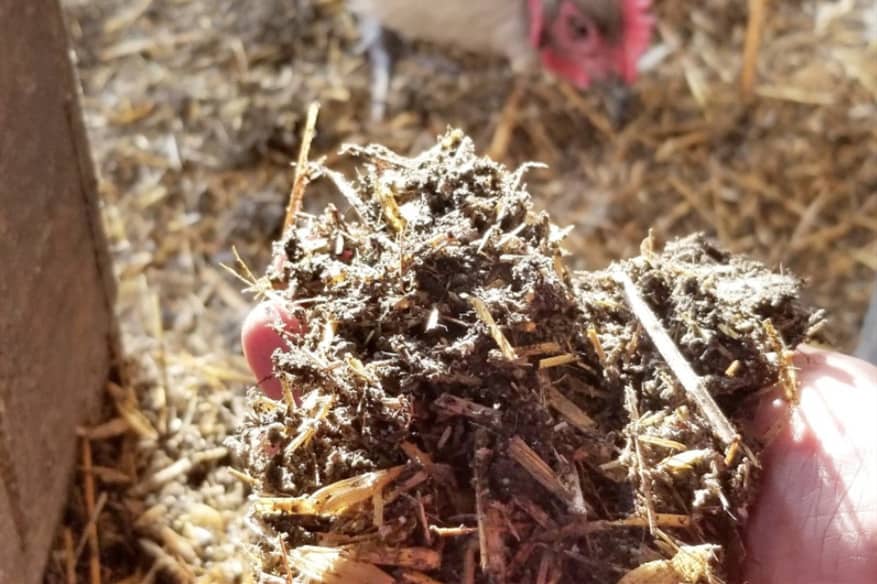
A hen can excrete approximately 4oz each day. Thus, if you’re going to raise chickens, you’ll need to prepare for cleaning the coop, also of disposing of the feces. The very first approach in managing waste is to provide chicken bedding within the coop.
Additionally, the proper bedding may keep the chickens busy. They have an inherent urge to scratch. And having hard surfaces in the coop can’t fill their entrenched habit.
Additionally, plain soil does not work. It remains moist, and the chickens will create large holes.
Specific individuals advocate adopting a deep litter system. This system provides the hens with a dense coat of bedding surface to dig and scratch in. But, it is not a suitable option for most backyard flocks for several reasons.
What are the Types of Chicken Bedding
There are many options when choosing the right chicken bedding. And each type has some different advantages and drawbacks. Below is a guide (with a list with videos and links) to assist you in understanding the distinctions between the many varieties of chicken bedding.
1. Hemp
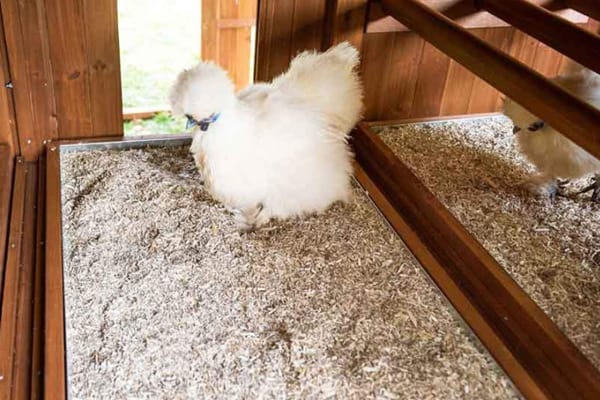
Cost: Expensive
Facilitation: ★★★★★
Replacement: Once or twice a year
Hemp can be one of the finest choices in the industry and an excellent choice since it is odorless, completely absorbent, and an all-natural substance. It may assist in maintaining the coop’s cleanliness for an extended length of time. Additionally, it’s a natural insecticide; it tends to keep away pesky insects.
2. Recycled Newspaper / Paper
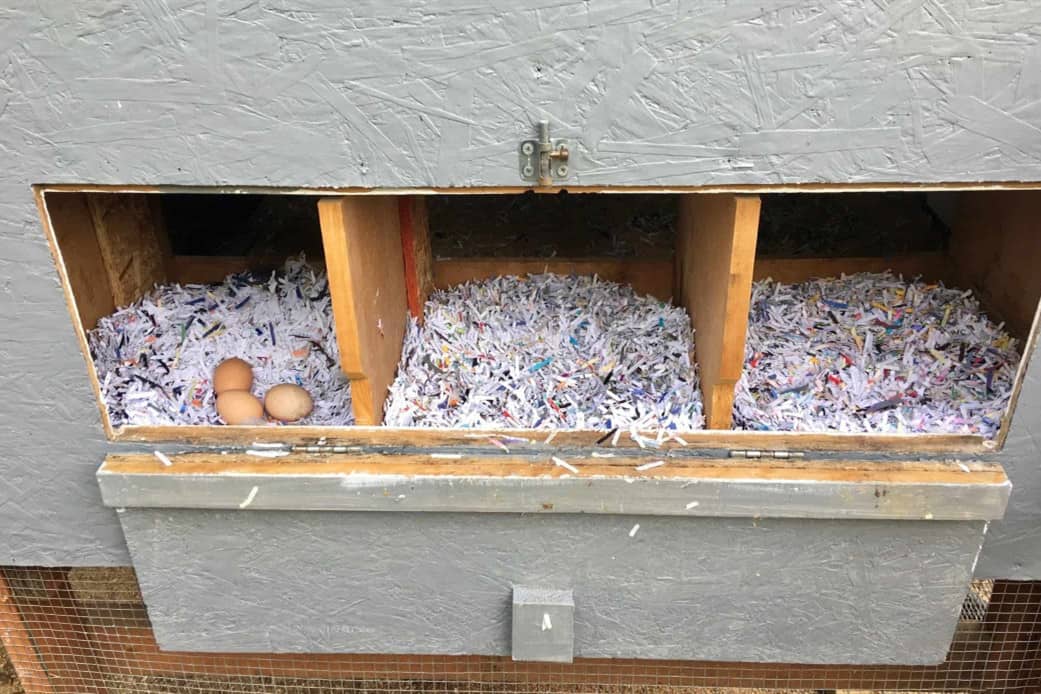
Cost: Cheap
Facilitation: ★★
Replacement: Every few days
Newspaper is another common choice for recyclers could be an efficient type of bedding. But, there are sometimes inks on the paper to consider; it could have chemicals and be hazardous.
3. Grass Clippings
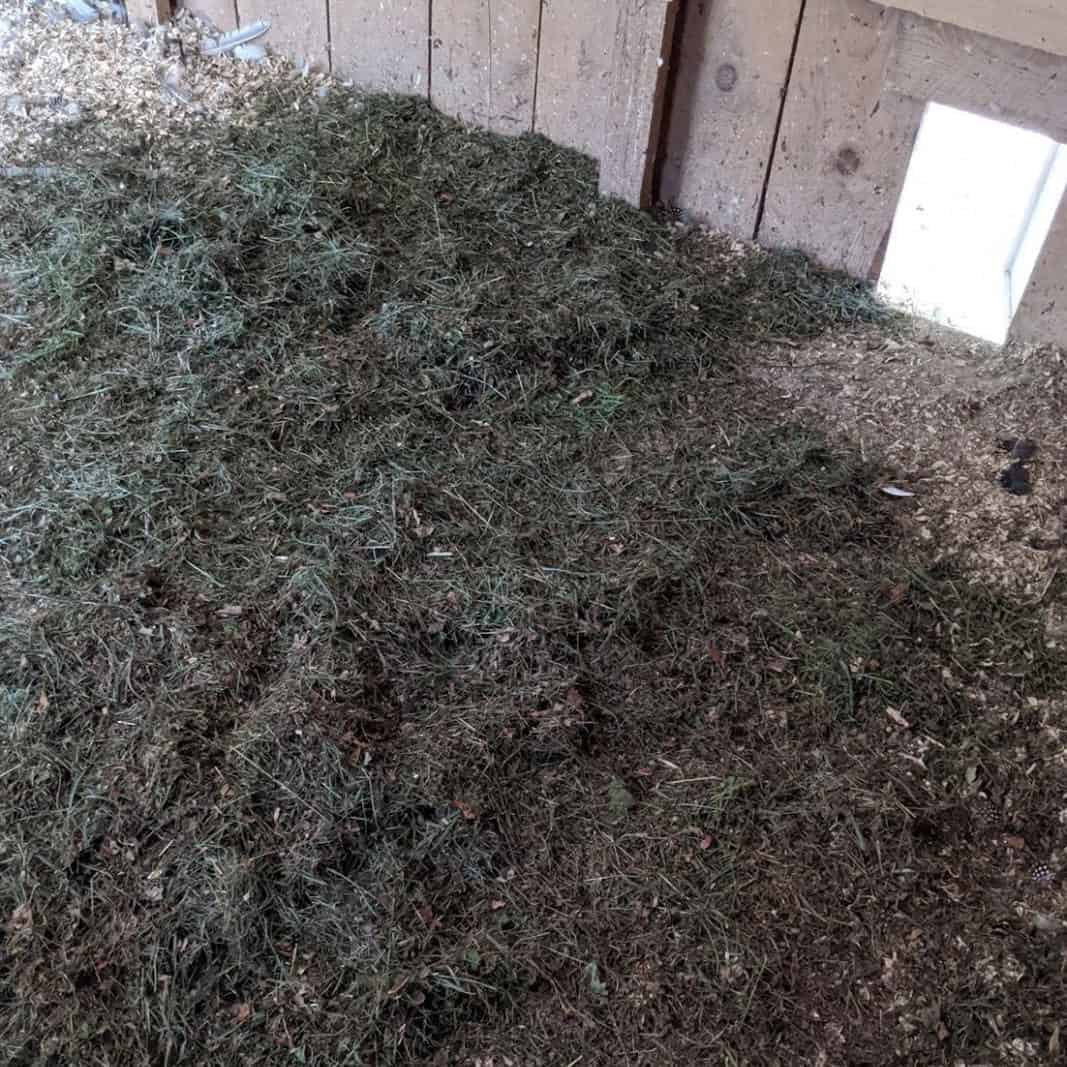
Cost: Cheap / Free
Facilitation: ★
Replacement: Every few days
If your lawn is sufficiently big, you may choose to use your lawn clippings. They function well, but there are a few reasons why you may want to avoid them. They do but keep moisture when it rains or when there’s saturation.
4. Shredded Leaves
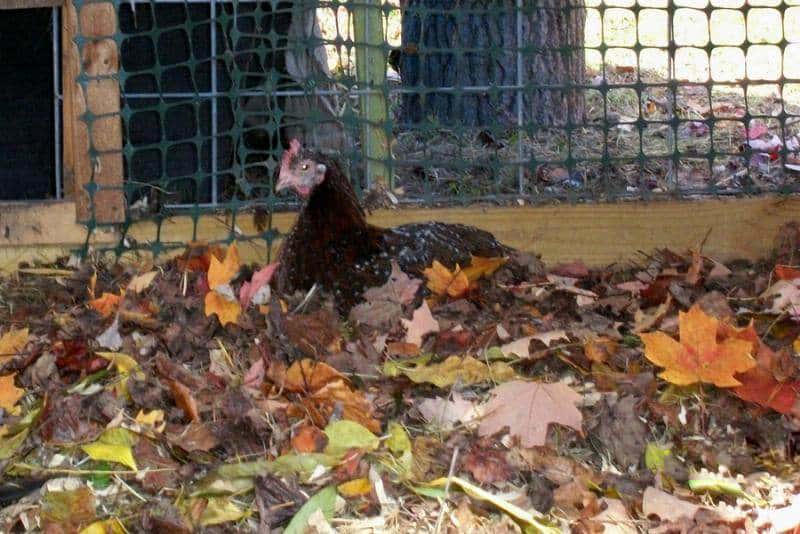
Cost: Cheap / Free
Facilitation: ★★★
Replacement: Every few days
Leaves must be shredded and appropriately prepared. Whole leaves can take a longer time to break, making them an unsuitable choice. At the same time, shredded leaves decay so fast, that they also need frequent replacement.
5. Wood Shavings
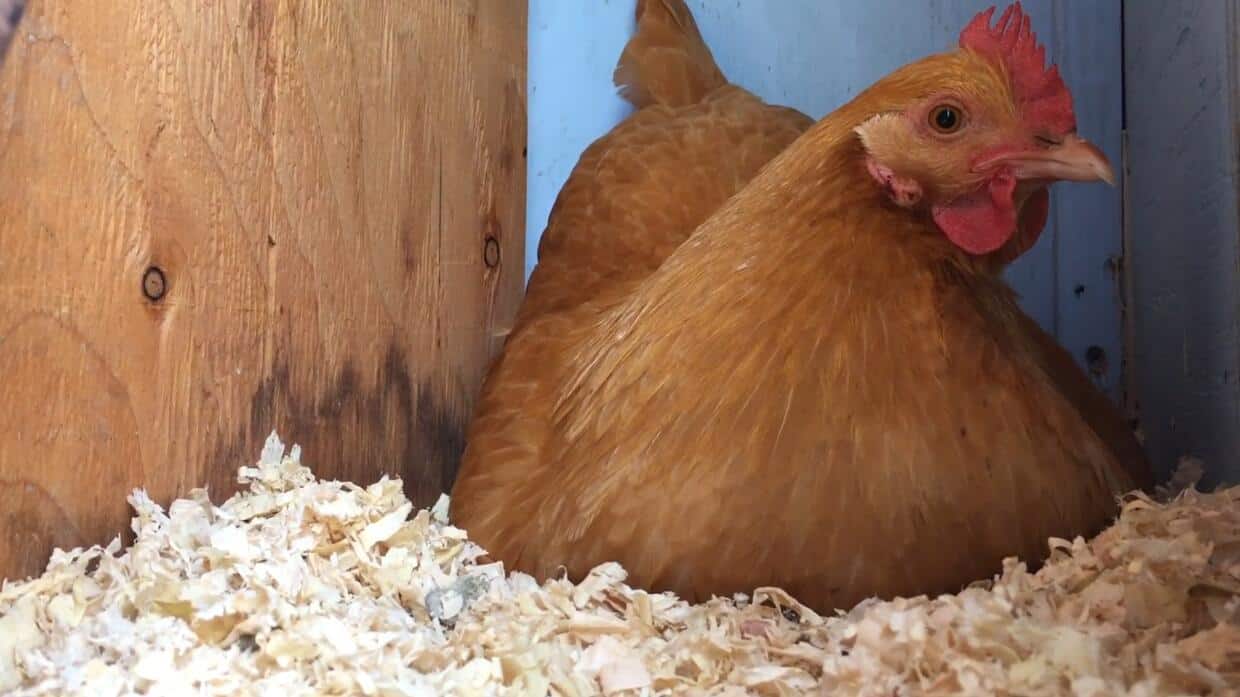
Cost: Reasonable
Facilitation: ★★
Replacement: Quarterly to half-yearly
Another preferred choice is Pine shavings. Pine shavings are accessible in feed and pet supply shops, so it’s convenient. You can also find these shavings in big-box and specialized retailers. But, they are pretty costly but do not decay at a quick pace and are fast drying.
6. Hay and Straw
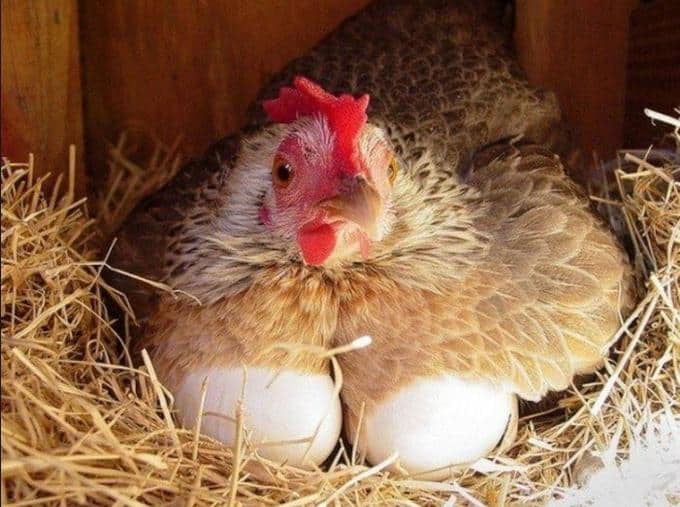
Cost: Expensive
Facilitation: ★★★
Replacement: Weekly
Most poultry breeders enjoy straw due to its natural aroma and feel. It’s an excellent choice produced from rye, wheat, barley, and any other suitable grasses. Hay is more like straw but is much more costly.
7. Excelsior Fiber

Cost: Expensive
Facilitation: ★★★★★
Replacement: When excessively soiled
Usually called wood wool pads, excelsior fiber is a modern alternative for chicken bedding. It’s also the best option in nesting boxes. They are popular with many chicken keepers due to their absorbing features.
8. Sand
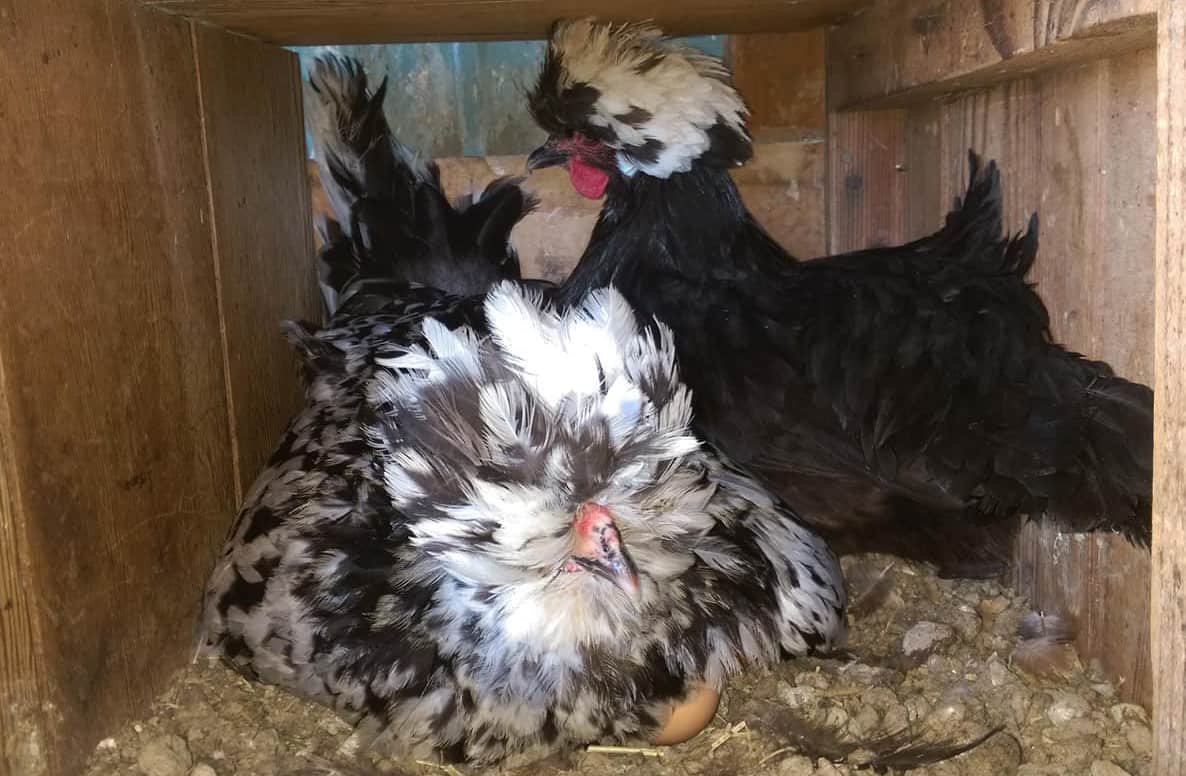
Cost: Expensive
Facilitation: ★★★★★
Replacement: Once or twice a year
Superb and relatively tidy, it’s pricey to begin with, but you will need to change it around twice a year. Sand dries fast and may cause no problems as much as you rake it off in a routine.
Chicken Bedding: How to do it Right
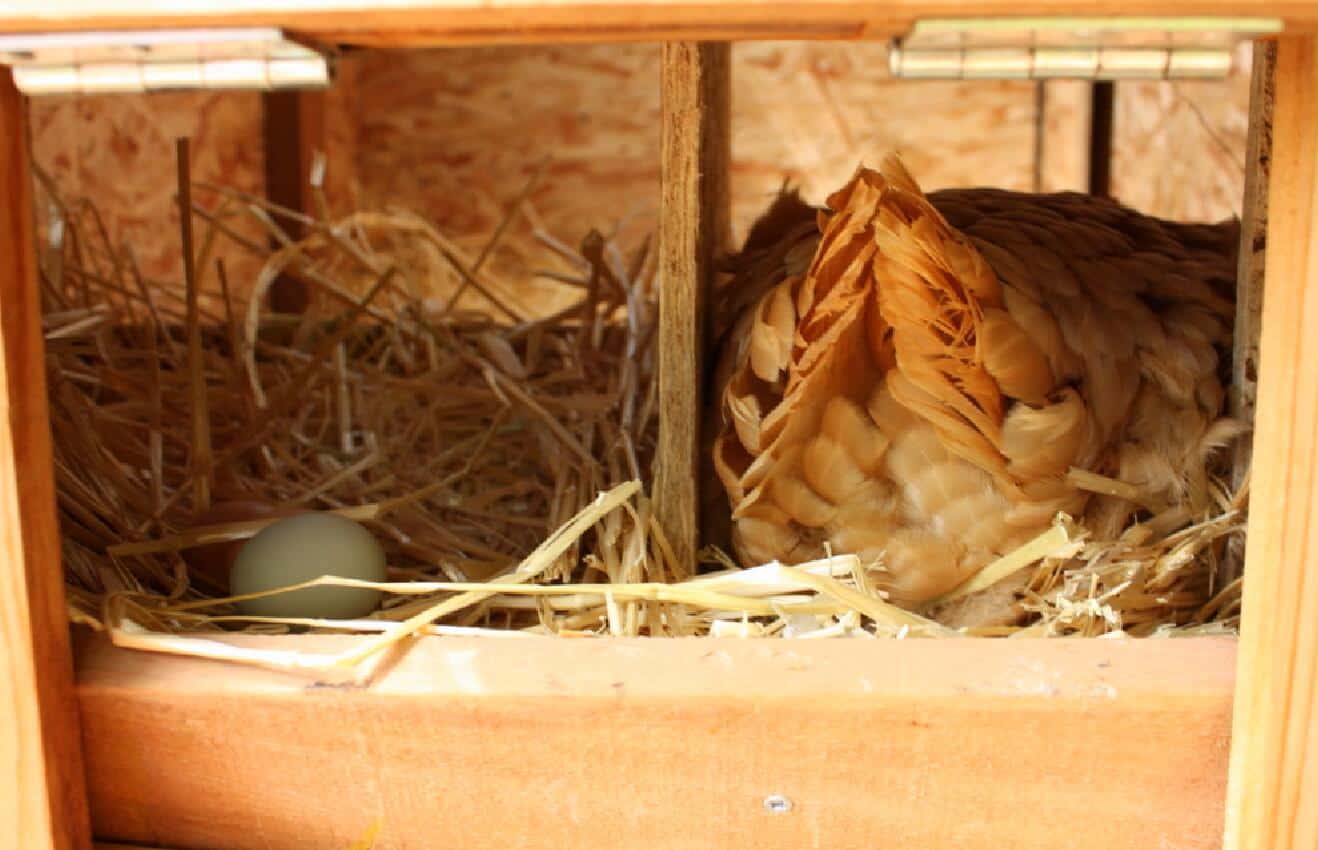
The most widely held misconception on chickens is they smell stinky. They do when caged up in coops with little natural ventilation or when their bedding becomes damp. But, knowing how to choose the right chicken bedding is not enough; you must also learn how to use the bedding material you chose. A few straightforward measures for a backyard flock may help reduce odors coming out of your chicken coop.
The proper usage of chicken bedding is crucial. Correct chicken bedding maintains the health of the chicken. More so, it sustains chickens to be clean and odor-free. There are many kinds of litter, but all should be capable of absorbing considerable moisture. Also, it protects the ground from coldness and provides a dusting area for chickens.
Chickens, unlike mammals, do not generate urine. All excrement exits their intestines as solid stools. This excrement contributes to the litter remaining dry.
Often, the most utilized bedding is wood shavings. You can buy the shavings at feed stores. If you’re lucky enough, you can have it for free from individuals working with wood. Wood shavings do have a pleasant smell, are very absorbent, and do not compact.
Sawdust is likewise effective yet is dusty. Chickens agitate the dust, which falls on everything in the coop. Straw and hay can be another popular kind of bedding. It is less costly than wood shavings but is not quite absorbent. Straw and hay clumps are compact and are more difficult to remove than wood shavings. You can also use dry shredded leaves to create adequate bedding.
Chicken bedding needs to remain dry. It’s to maintain an odor-free atmosphere in the coop. Four to six inches piles of dry wood shavings can likely last up to six months or longer. While the chickens scratch and mix the wood shavings, the excrement gets mixed too. Every three to six months, remove the old dirty bedding from the coop and replenish it with new fresh wood chips. Compost used bedding or incorporate a thin layer into plant soil to give nutrition and moisture absorption.
Whenever the bedding becomes wet, often due to a leaky or spilled waterer, take the soaked part of the bedding away immediately. And replenish it with the new material you’re using. Otherwise, it can develop an odor right away.
What to Do with Used Chicken Bedding

It is best to know how to choose the right chicken bedding. But, there will always be a time when your coops go over a lot of dirt on their bedding.
During storms, it requires you to scoop away most of the time the coop waste only because it is damp. In some coops, people use wood shavings; in others, they use hay and straw. It may result in a large amount of smelly bedding to dispose of.
There are a couple of ways to get rid of the used dirty chicken bedding and manures. This dirt is not a useless pile of filth.
Yes, you have the option to dump the beddings and manures somewhere in your vast land. Or you can also burn them all together with all the parasites and pests living in it.
More so, you can hand it over to the garbage retrieval personnel in a polite way. But you also have the better options below that can benefit you and get the best out of the manures; here’s how.
Compost your dirty coop bedding and manure
Composting your coop bedding and your flock’s excrement allows the manure to dissolve a few of the more potent nutrients. Thus, making them more useable by the garden plants.
Composting chicken waste is a straightforward process. When you have chickens, you can use their bedding for composting.
You can start by collecting the old chicken bedding and place it in your compost container. Gently water it and flip the heap every other week to let air circulate.
Composting chicken manure in a proper way takes approximately six months up to nine months in general. Composting chicken excrement requires a precise length of time, depending on the circumstances. Whenever you are unsure how effective is the decomposition of your chicken excrement, you may wait up to a year before using it.
Sell it
Gardeners and vegetable farmers would spend on poultry manure even if it is not composted yet. That means they have to do the composting process themselves.
What’s surprising is that many people do it, and it’s shocking to other individuals! You can promote it in your local agricultural organizations or groups.
You can also advertise on the internet thru online groups and forums. Posting notices in garden shop noticeboards is also another way. Fill empty feed bags with it, and you can sell it per bag or even per kilogram.
Summary
Choosing the right chicken bedding is a case of you getting what you chose and paid for. Every material mentioned above will function with a variety of chicken coops differently. This article is a good read in narrowing down your search for the finest bedding for your coop and your beloved birds.
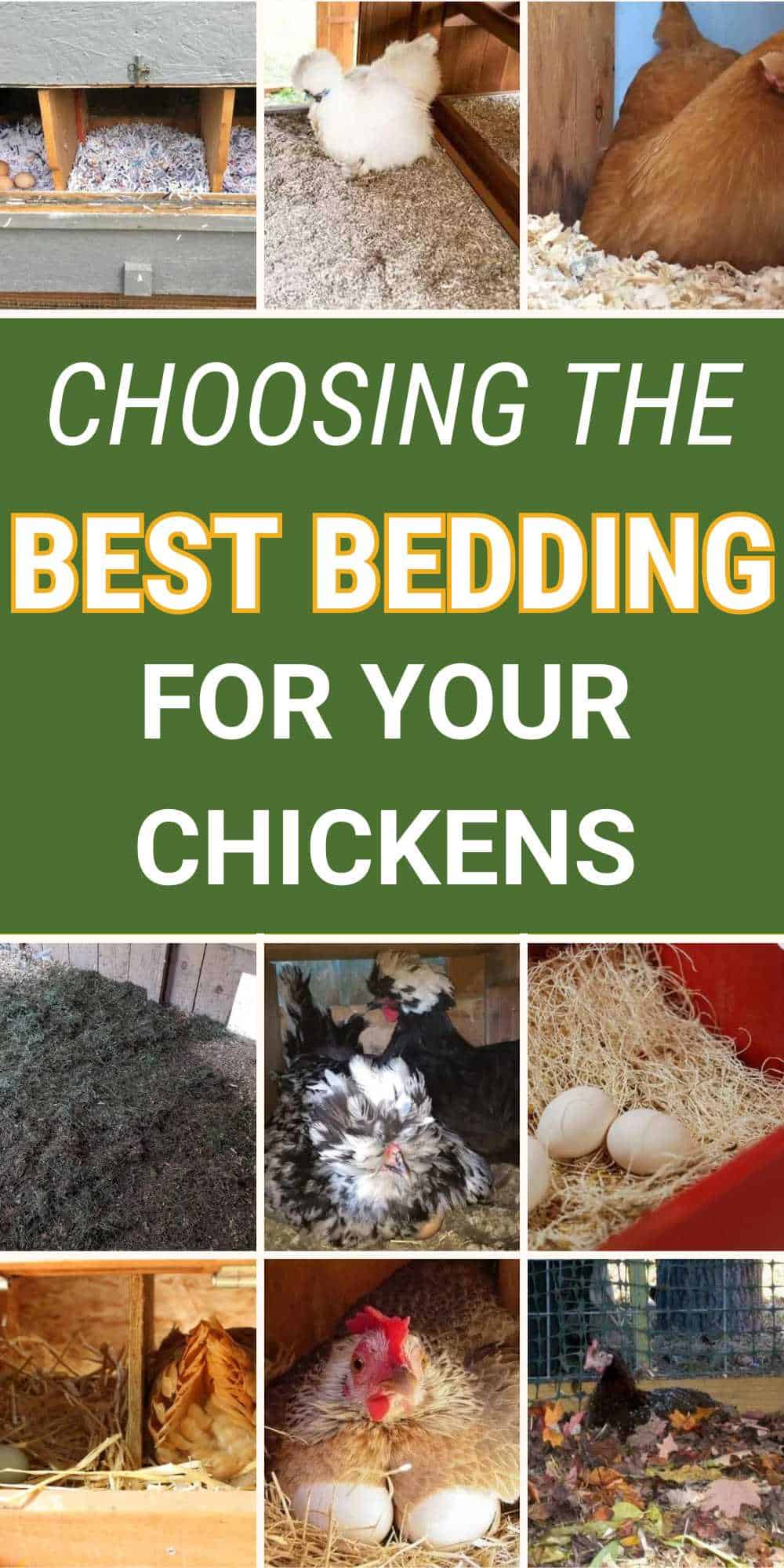

Joseph Hudson has been raising chickens for over 15 years. In 2018, he completed the Agriculture & Natural Resources program at Mt. San Antonio College. He currently raises over 1400 chickens on his 7.5-hectare farm. He keeps sharing his experience on raising healthy and happy chickens on Chicken Scratch The Foundry.
